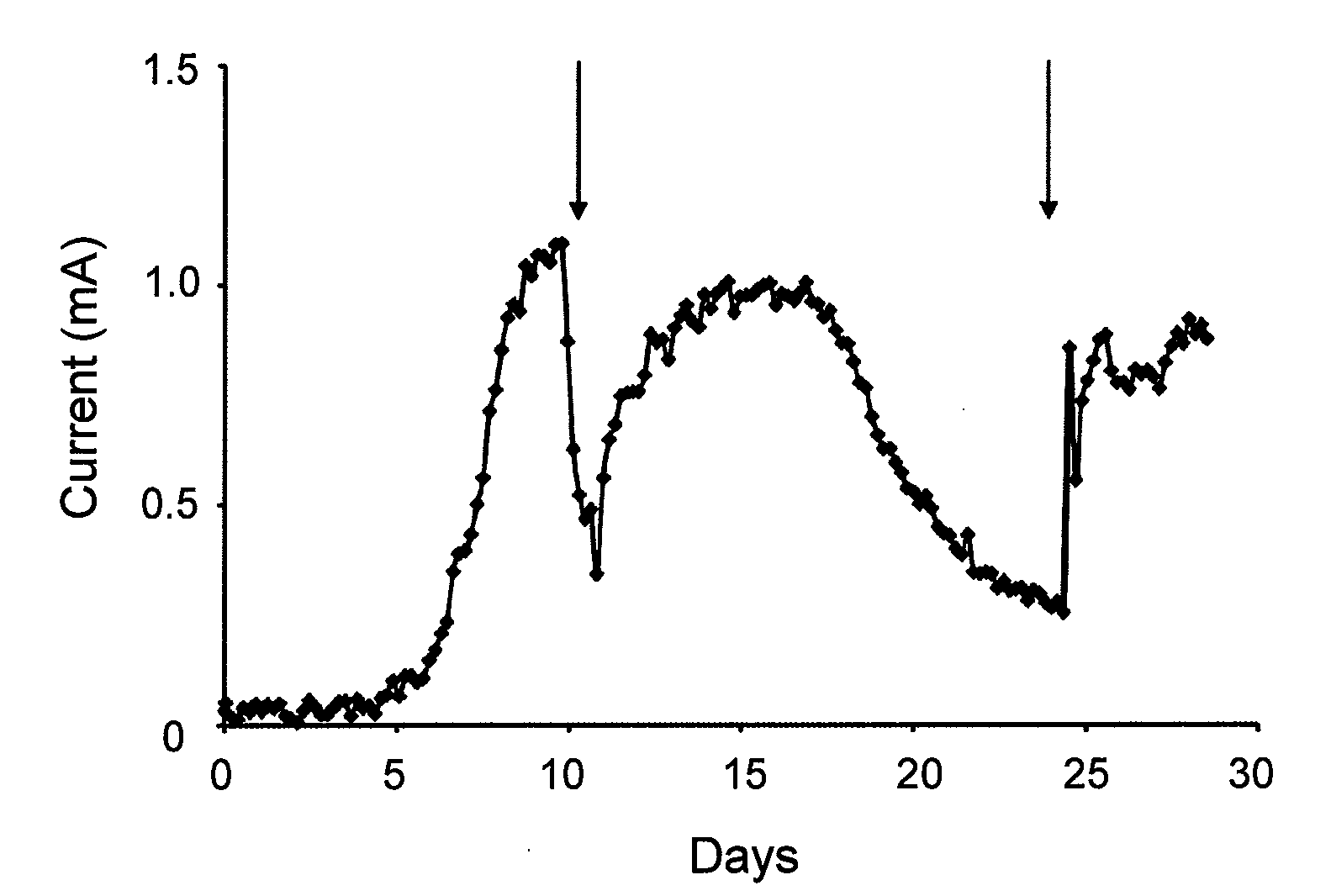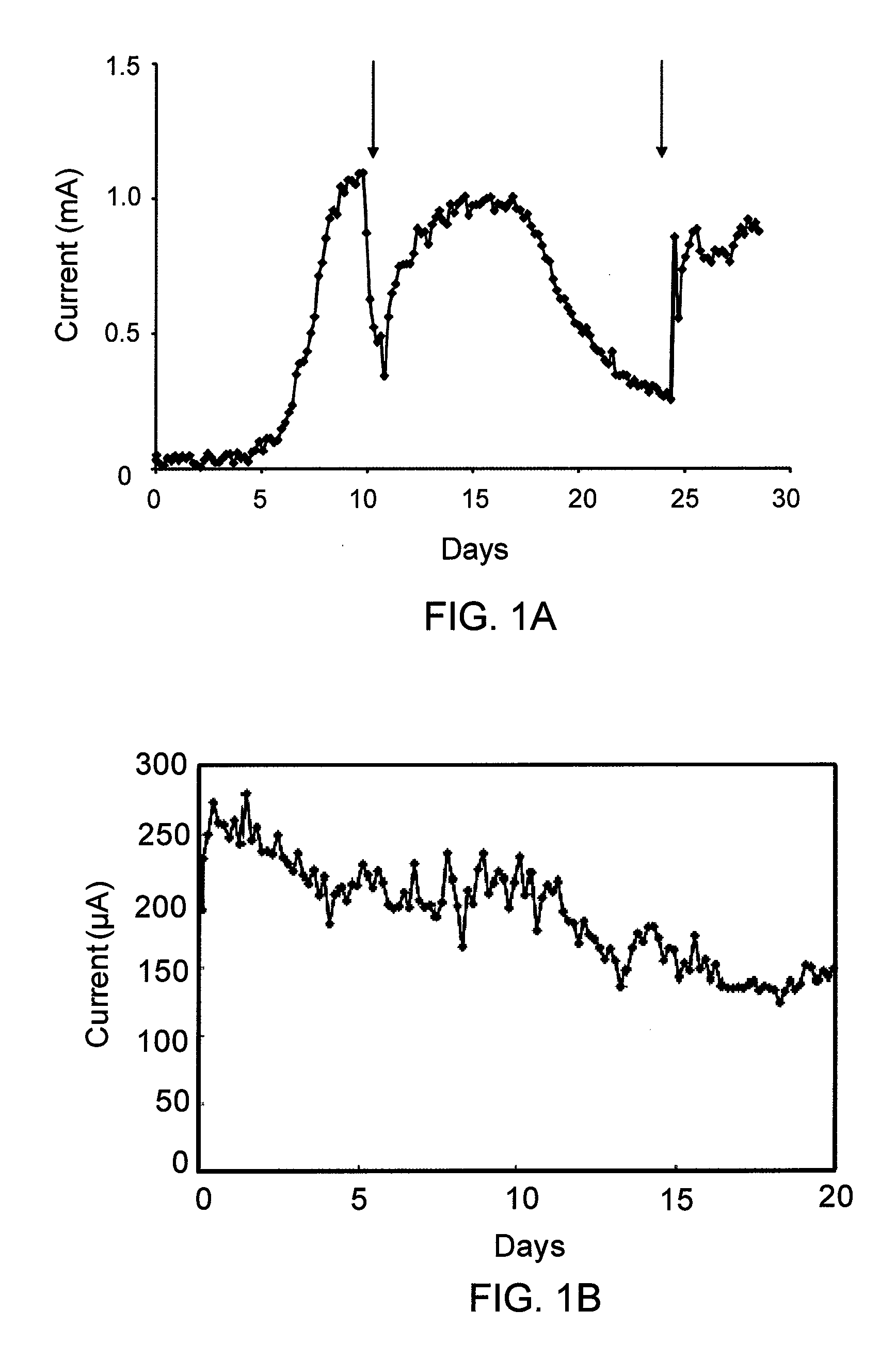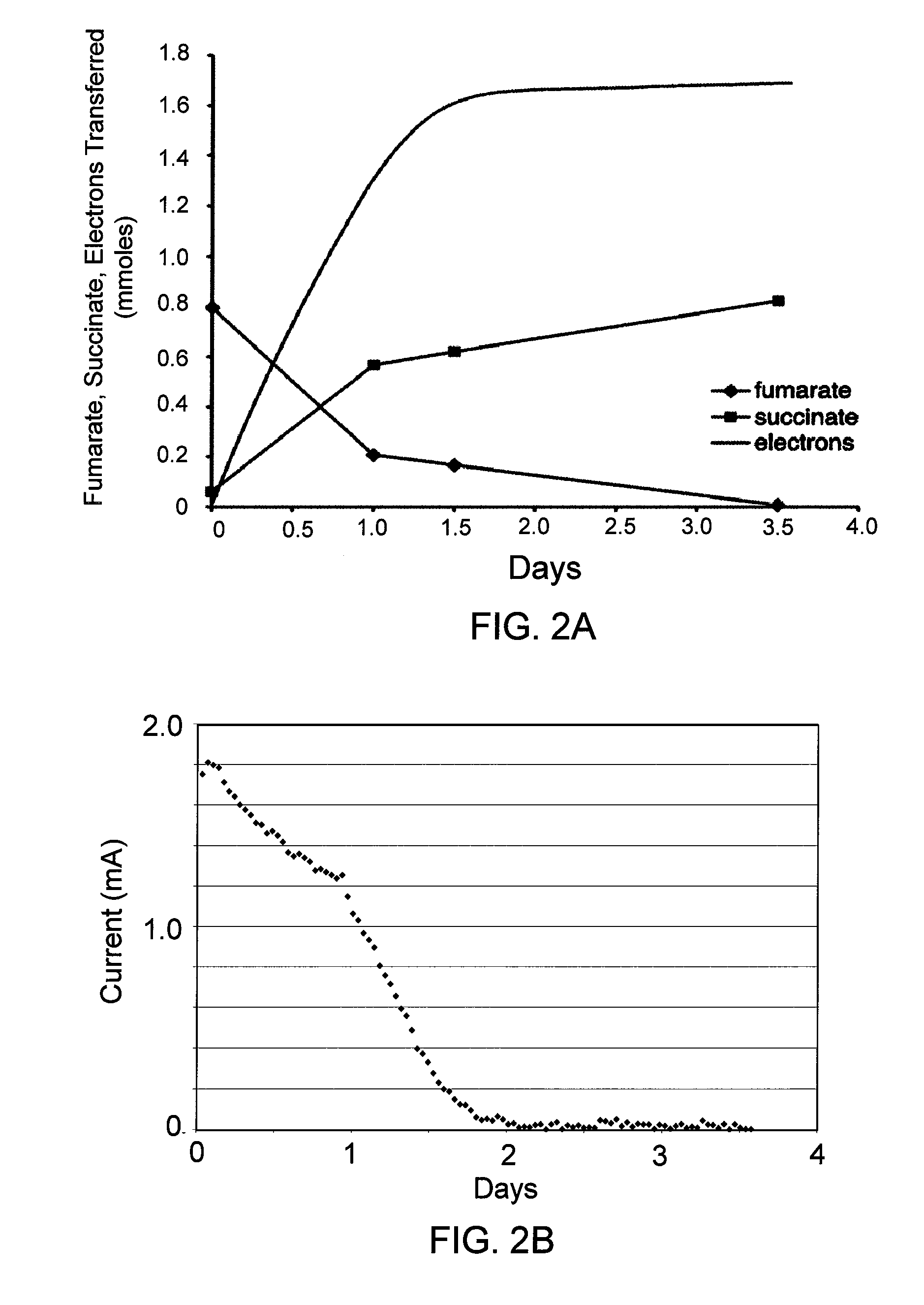Systems and methods for microbial reductive dechlorination of environmental contaminants
a technology of environmental contaminants and microbial reductive dechlorination, which is applied in the field of bioremediation, can solve the problems of large dispersed plumes of chlorinated hydrocarbon solvents that are difficult and expensive to treat, small amounts of solvents can pose serious risks to the environment and water supply, and the current abiotic and biotic in situ remediation strategies available for groundwater contaminated with chlorinated dnapls have limitations and drawbacks, and achiev
- Summary
- Abstract
- Description
- Claims
- Application Information
AI Technical Summary
Benefits of technology
Problems solved by technology
Method used
Image
Examples
example 1
G. Lovleyi is Capable of Accepting Electrons Directly from a Source Electrode
[0090]FIG. 1 is a graph showing the current production by G. lovleyi with acetate (10 mM) serving as the electron donor and a poised electrode serving as the electron acceptor. The arrows indicate when fresh acetate medium was added. The data are from a representative example of duplicate current producing cultures.
[0091]In order to determine whether G. lovleyi could also accept electrons from an electrode, studies similar to that previously described with G. sulfurreducens in which an electrode served as the electron donor and fumarate as the electron acceptor were performed. FIG. 2A and FIG. 2B are graphs showing the reduction of fumarate by G. lovleyi, and use of electrons from a graphite electrode as electron donor. After current transfer from the electrode was established with fumarate (20 mM) and low levels of acetate (2 mM), growth media was replaced with fresh media containing fumarate (0.8 mmoles) ...
example 2
G. Lovleyi does Reductive Dechlorination Using Electrons Directly from a Source Electrode
[0094]In order to determine if reductive dechlorination was possible with an electrode serving as the electron donor, G. lovleyi was again grown in the presence of a poised electrode, but with acetate (2 mM) and PCE (39 μmoles) as the electron acceptor. The amount of PCE that can be added is much lower than the amount of fumarate, due to toxicity of PCE to the strain at high concentrations. Once reduction of PCE to cis-dichloroethene (cis-DCE) was observed, the medium was replaced with a new medium containing PCE (39 μmoles) as the electron acceptor, but with the electrode serving as the sole electron donor. Lactate (2 mM), which does not serve as an electron donor for G. lovleyi (Sung et al., 2006), was added as a carbon source. Once PCE was completely reduced to cis-DCE with the electrode serving as the electron donor, additional feedings of 39 μmoles were repeated until maximum rates of dechl...
example 3
A. Dehalogenans Reductive Dechlorination Using Electrons Directly from a Source Electrode
[0097]Chlorinated aromatic compounds are another important class of chlorinated contaminants. Anaeromyxobacter dehalogenans species are capable of dehalogenating 2-chlorophenol. Like the Geobacter species, to which they are related, they are also capable of extracellular electron transfer to Fe(III). A. dehalogenans strain 2CP-1 produced current with acetate as the electron donor. FIG. 1B is a graph showing the current production by A. dehalogenans strain 2CP-1 with acetate as the electron donor and poised graphite electrode (+500 mV vs. SHE). Cultures of A. dehalogenans were grown at room temperature (ca. 22-25°under N2:CO2 (80:20) in 200 ml of stirred (180 rpm) medium in the 265 ml working electrode (anode) chamber of an anaerobic, dual-chambered electrode system. Acetate (10 mM) was provided as the electron donor, and initially, both fumarate (40 mM) and the electrode (+300 mV vs. SHE) were a...
PUM
| Property | Measurement | Unit |
|---|---|---|
| electrode potential | aaaaa | aaaaa |
| angle | aaaaa | aaaaa |
| angle | aaaaa | aaaaa |
Abstract
Description
Claims
Application Information
 Login to View More
Login to View More - R&D
- Intellectual Property
- Life Sciences
- Materials
- Tech Scout
- Unparalleled Data Quality
- Higher Quality Content
- 60% Fewer Hallucinations
Browse by: Latest US Patents, China's latest patents, Technical Efficacy Thesaurus, Application Domain, Technology Topic, Popular Technical Reports.
© 2025 PatSnap. All rights reserved.Legal|Privacy policy|Modern Slavery Act Transparency Statement|Sitemap|About US| Contact US: help@patsnap.com



